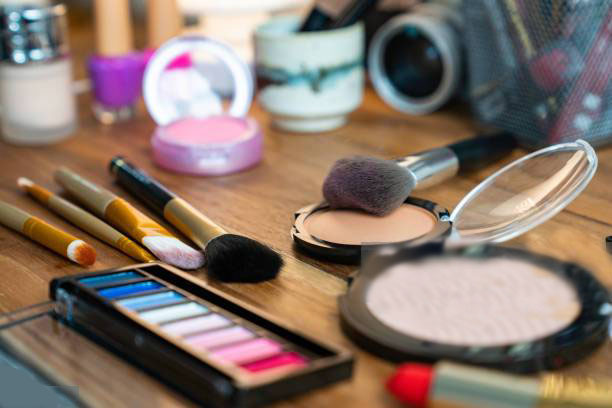Makeup artistry is a creative and versatile skill that involves using cosmetics to enhance and transform a person’s appearance. Whether you’re interested in everyday makeup, special occasion looks, or theatrical and avant-garde styles, makeup artistry allows for self-expression and the opportunity to bring out one’s unique features. Here’s a brief overview of makeup artistry:
1. Makeup Tools and Products:
As a makeup artist, you’ll need a variety of tools and products, including brushes, sponges, makeup palettes, foundations, concealers, eye-shadows, lipsticks, and more. Investing in high-quality tools and products is essential for achieving professional results.

2. Skin Preparation
Start by cleansing and moisturizing the skin to create a smooth canvas. Using a primer can help makeup adhere better and last longer.

3. Foundation
Choose a foundation that matches the client’s skin tone and type. Apply it evenly to create a flawless base. Blend well to avoid harsh lines.

4. Concealer
Use concealer to cover blemishes, dark circles, and imperfections. It should be slightly lighter than the foundation and applied sparingly.
5. Contouring and Highlighting
Contouring involves using darker shades to define and sculpt the face, while highlighting uses lighter shades to accentuate features. These techniques can help create dimension.
6. Eye Makeup
Eye makeup can range from natural to dramatic. It typically includes eyeshadow, eyeliner, mascara, and false eyelashes if desired. Consider the client’s eye shape and color when choosing eyeshadow shades and styles.
7. Eyebrows
Groom and shape the eyebrows using eyebrow pencils, powders, or gels. Well-defined eyebrows can frame the face beautifully.
8. Blush and Bronzer
Apply blush to the apples of the cheeks for a healthy flush of color. Bronzer can be used to warm up the complexion and add a sun-kissed glow.
9. Lips
Lip makeup includes lip liners, lipsticks, and lip glosses. Choose shades that complement the overall makeup look and the client’s skin tone.
10. Setting the Makeup
Use a setting spray or powder to lock the makeup in place and prevent it from smudging or fading throughout the day or night.
11. Creativity and Artistry
Makeup artistry is not just about enhancing natural beauty; it’s also a form of self-expression. Makeup artists can create avant-garde, fantasy, and theatrical looks that push the boundaries of traditional makeup.
12. Client Consultation
Effective communication with clients is crucial. Understand their preferences, skin type, and any specific concerns or requests they may have.
13. Practice and Continuous Learning
Makeup artistry is a skill that improves with practice. Keep up with the latest makeup trends and techniques through workshops, courses, and by following makeup artists on social media.
14. Hygiene and Sanitation
Maintain strict hygiene practices, such as regularly cleaning and sanitizing your makeup brushes and tools. This is essential for the health and safety of your clients.
Remember that makeup artistry is a versatile field, and there are various niches to explore, including bridal makeup, special effects makeup for film and theater, editorial and fashion makeup, and more. It’s a career that offers the opportunity to unleash your creativity and make people feel confident and beautiful.


